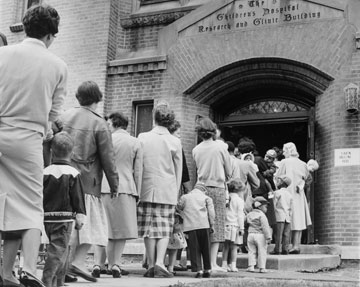
April 24, 1960 - Sabin Sunday in Cincinnati, Ohio
On Sunday, April 24, 1960, more than 20,000 children in Cincinnati, Ohio, and the surrounding area received the Sabin oral, live-virus polio vaccine in its first public distribution in the United States. Within two weeks, over 180,000 of the region's children ages 3 months to 6 years received the vaccine. Later known as "Sabin Oral Sunday," national campaigns throughout the United States and in many countries around the world, encouraged people to line to receive the oral vaccine in a few drops of syrup or on a sugar cube.